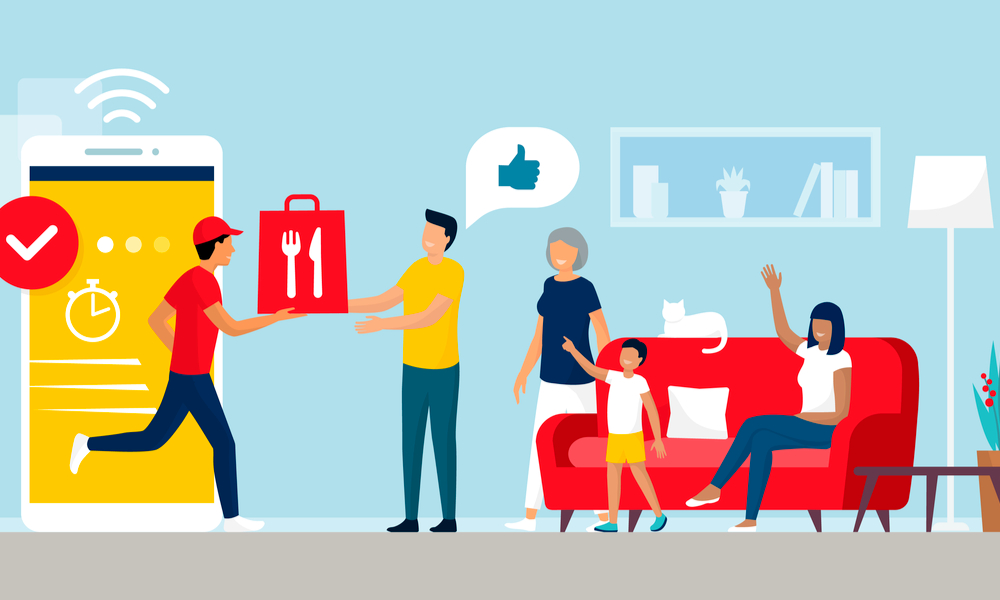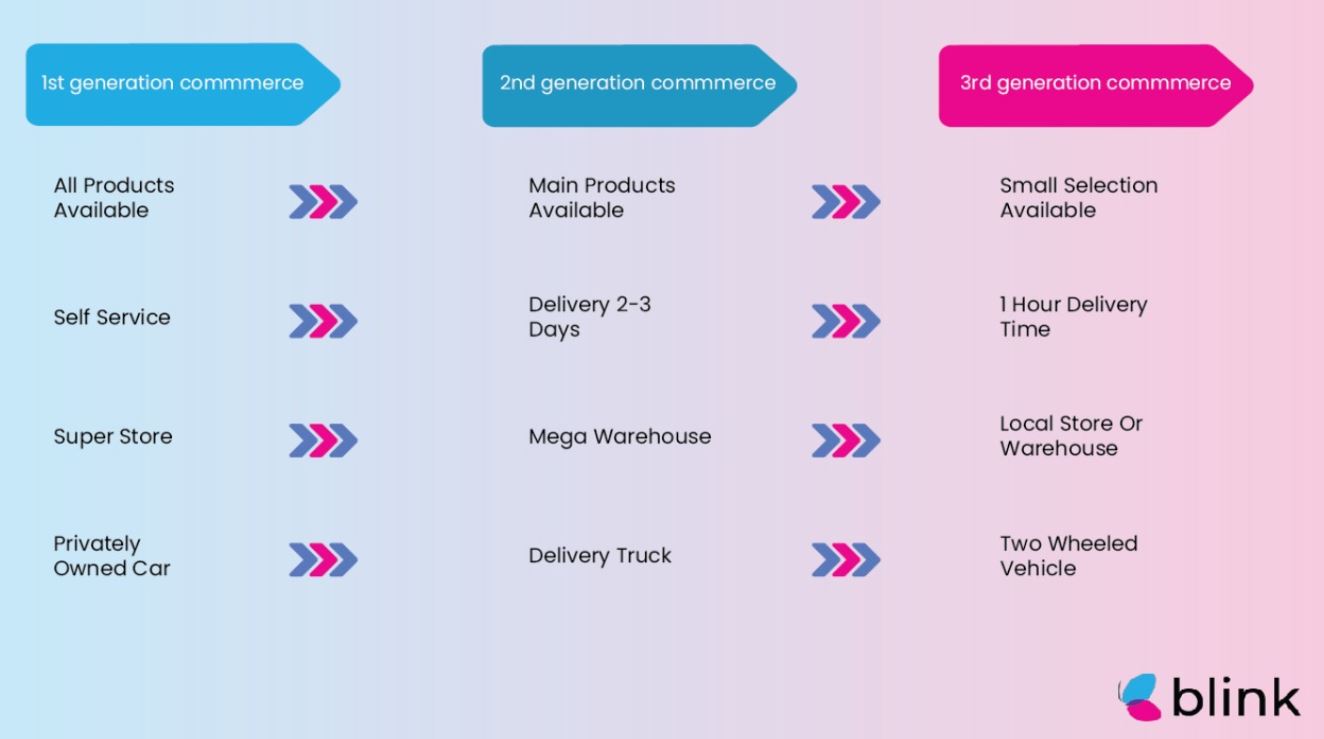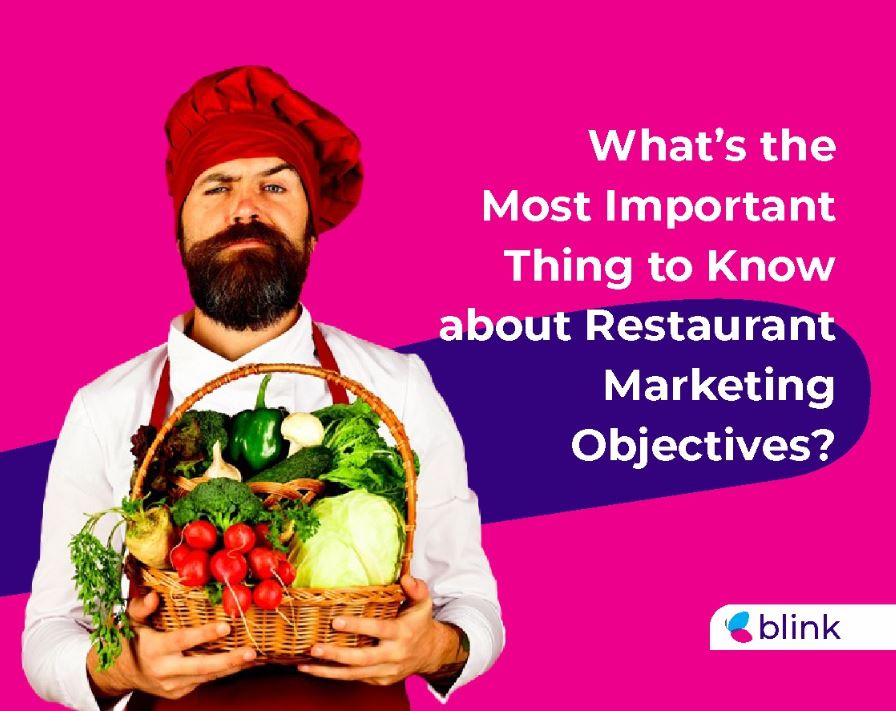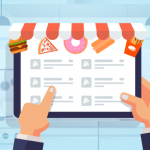If you are looking to find answers on how to increase restaurant sales, this post is for you. There are a couple of reasons for stating so, and we’ll get to them in a bit.
To start off, the restaurant online ordering growth trend recently got hit by the Covid-19 pandemic situation pretty bad. So much so that it is expected that the new “normal” definition of dining on-premise has completely changed to date.
The latest food ordering trend leans towards a quick commerce shopping experience. Not that quick commerce wasn’t in the picture before, but with Covid happening, and the lockdown ensuing all over the world, many industries had to make the transition quickly. At the moment, online ordering, bundled with a quick e-commerce buyer behavior has helped to increase the order volume for the F&B industry by approx. 300%.
While you may be well aware of how to increase restaurant sales by now, if there’s even the slightest chance that you recently started your own food business, this guide will serve as a refresher. Pandemic or no pandemic, the new marketing outlines, scalability campaign strategies, and a couple of tips from Blink Co. experts will go a long way to determining how fast you can grow your food business without any unexpected setbacks.
The best part is that some of these ‘how to increase restaurant sales’ tips can be done without expending too much. You can also adapt them as you move through different stages of your food business every couple of months.
Read on…
How to Increase Restaurant Sales With These 4 Amazing Strategies?
1. Start By Choosing the Right Ordering Platform For Your Restaurant
Choosing the right online food services partner is crucial. In fact, we mandate it as a no-compromise rule because that’s where it all starts for any up-and-coming food startup.
A lot of people make poor mistakes when they are looking to partner up with a food services company.
Usually, such choices lead to signing up a contract with a high-commission online ordering platform that charges hefty percentages, hidden charges, and whatnot. Eventually, the business goes into debt. There were many instances where aspiring food startup business owners had to throw in the towel early because they weren’t expecting such high expenses at the hands of a so-called food services business partner.
As of right now, there are two kinds of food order business partners that you can choose from:
- Direct Food Ordering Service Provider
Blink Co. is an example of a direct online ordering and fleet management platform where you can sign up for different services.
As a direct food ordering and fleet management platform, Blink Co. facilitates its partners through different key services. Take a look below:
- White label your online name-brand food business portal with your services so that it’s your branding in front and center, not Blink’s!
- Multiple and flexible payment processing options to facilitate you and your online food order customers altogether
- Interactive and powerful Microsoft Bi-powered reports.
- Integrated marketing solutions, such as SMS, social media platforms, etc.
- Create and execute restaurant loyalty & reward campaigns
- Sophisticated fleet management portal to monitor order delivery status, rider status, delivery times, the maximum number of orders delivered, etc.
- Unified ordering through the front-end food ordering app for your restaurant, your restaurant website, and your social media pages. The latter was offered as part of the new ‘social commerce’ experience.
Here’s the best part. As of right now, Blink Co. is the lowest commission business partner that charges between 2% – 2.5% to new and existing customers. Compared to 3rd party services platforms where commissions can get as high as 45%, our direct ordering services platform takes pride in helping startups to scale without any roadblocks.
- Third-Party Food Ordering Service Provider
When it comes to 3rd party food ordering partners, think UberEats, FoodPanda, Deliveroo, etc. These platforms are also effective for facilitating ordering logistics, marketing, and deliveries, but their commissions can easily reach the 40% mark.
High commission platforms mean that you will pay different fees whether you make 100 or 1,000 sales. Whereas, a direct ordering services facilitator will charge a flat fee, regardless of the sales volume.
Therefore, choose carefully and plan ahead of the curve.
2. Use SEO to Help Your Website Rank Higher
Each restaurant specializes in a different type of cuisine. A good illustration of this would be an Upper East Side Italian restaurant in New York City. Those keywords should be incorporated into your website’s content.
Customer orders are frequently placed from the first eateries that appear on a Google search for the terms you’ve provided. Increased sales at your restaurant depend on your presence.
Using this method, you will be able to make your restaurant more visible to customers and dispel the feeling of being hidden. Using keywords is akin to planting breadcrumbs for your clients so that they can find you when they need to.
The quicker the crumbs reach you, the bigger they are.
There is no doubt that using the internet is a quick route to:
- Bringing In New Clients
- Increasing The Value Of The Typical Order
- Which Will Ultimately Show You How To Boost Restaurant Sales
By doing this, you can do rid of your veil of anonymity and make your business very visible to customers. By using keywords, you’re essentially laying a trail for your customers to follow when they’re looking for you. This is one of the most useful tips on how to increase restaurant sales.
3. Master The Art of Restaurant Menu Engineering
Restaurant menu engineering is connected with food menu price optimization. If you haven’t figured out why some of the dishes on your restaurant’s online ordering menu are not performing well, even though you spent hours creating everything, you need to engineer your menu.
How does it work?
Restaurant engineering splits the entire menu into 4 different quadrants. You’ve got, Horses, Puzzles, Dogs, and Stars to deal with. We wrote a detailed post on restaurant menu engineering and how to calculate food cost percentages – you should check those out.
The gist is that you need to offer a bundled experience to combine Puzzles and such category food with the Stars category. A lot of food items are not able to perform well on their own. Appetizers are best served in entrée courses with soups, and Beer goes high in demand when it’s offered as a one-time free drink with a snack.
Find ways to entice your customers, and priced accordingly. Sometimes, luxury food items can be paired with non-alcoholic, or alcoholic beverages alongside a flat discount.
Furthermore, menu price optimization can be easily done through a customizable online food order menu through your account dashboard.
That is, of course, if you have partnered with a direct food ordering services provider already. Tweak your menu settings within minutes to change prices, offer combo deals, and add limited-time discounts to tantalize customers with mouth-watering menu items to choose from.
4. How to Increase Restaurant Sales Through Social Media Influencers?
Social media influencers play a critical role in bringing in all kinds of referral traffic to your online food app.
Do it right, and you will not only end up getting a slew of new customers, but you can also stay connected with them through a hyper-active email marketing campaign. A lot of food startups focus on running collaboration campaigns with social media influencers at launch day. However, there’s a lot more to it than what meets the eye.
We recommend joining hands with micro-influencers, since they have a relatively higher engagement rate as compared to mega influencers. With micro influencers, another benefit of collaboration is the low price. Unlike mega influencers, micro influencers do not charge thousands of dollars to promote a sponsored post. The prices are within the feasibility margin, leaving room for you to work with multiple influencers at a time.
5. Pay Attention to Customers’ Dietary And Allergen Preferences
You are always missing out on making an online food order sale if your customers don’t know the key ingredients in the food that they’re about to order. Words, such as; Gluten-Free, Vegan, Dairy-Free, Keto, and vice versa are always useful wherever they’re applicable.
The best way to add such one-word descriptions is through an online restaurant menu creator. These labels are excellent and are also a lifesaver for people with severe food allergies. If you want to do it professionally, hire a food expert with allergen training or certification. This person can oversee the labeling process when you are busy creating your online food order menu.
6. Identify Your Customers’ Personality
Want to know how to how increase restaurant sales and make a restaurant better and make it busier? Start by identifying with the personality features of your customers.
Most consumers want to patronize companies that share their opinions and values.
The kind of customer you want to draw in will determine how you go about doing this. Learn about youth culture and keep up with millennial diners’ eating habits if you want to attract more young people to your establishment.
Reflecting their views will help you draw in an older, more traditional clientele who will feel comfortable spending money at your business.
The Takeaway
When you optimize your restaurant landing page, food ordering app, and social media profile, it all connects to your customers’ shopping experience. As a matter of fact, there’s a lot of thoughtful planning that goes behind the common: “How to increase restaurant sales” analogy these days.
With simple integrations such as quick social commerce tools, you can also increase your sales through social media pages. Customers can directly place food orders through your social media online orders page, instead of switching back and forth between your food ordering app, your restaurant website, and of course, the social media profile for the business.
Such optimizations eventually lead to a trickle-down effect where sales coming in from each category allude to a better and delightful business experience. Integrate these practices and improvise wherever it’s applicable.
Good luck!










